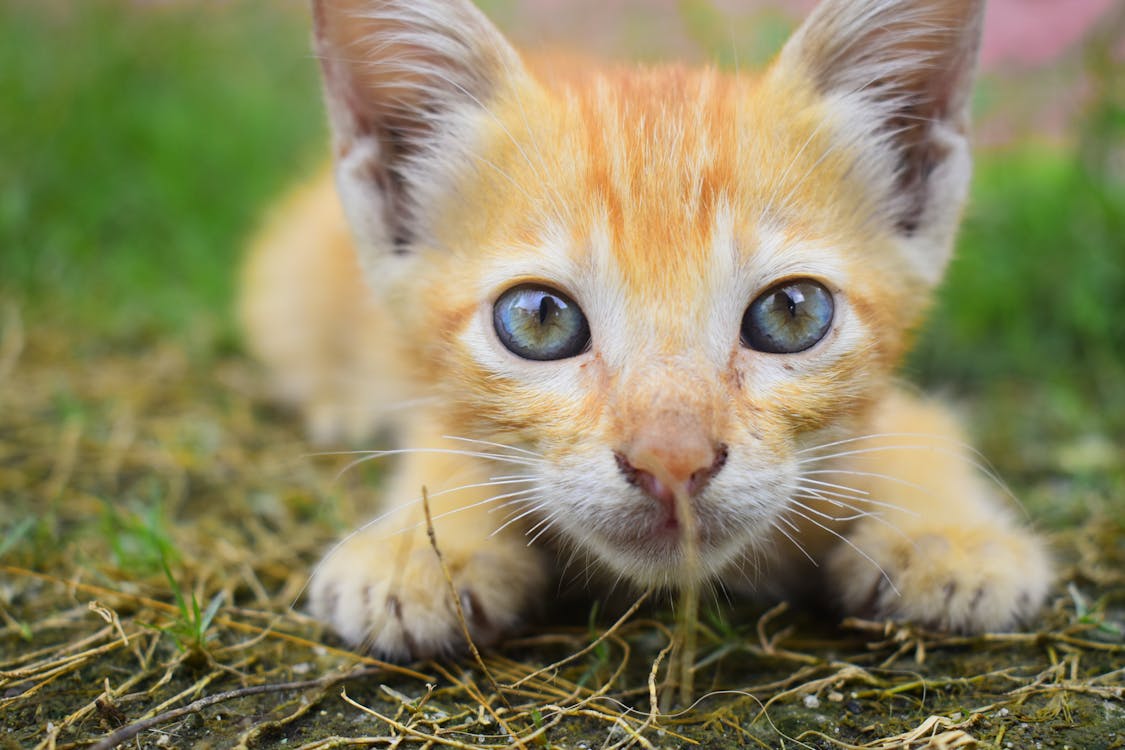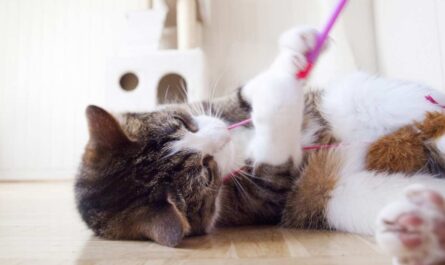How to teach your cat no? Have you ever walked into your living room to find your favorite chair transformed into a scratching post, courtesy of your beloved feline friend? Or perhaps you’ve discovered a symphony of shattered glass on the floor, a testament to your cat’s newfound fascination with the china cabinet? Let’s face it, teaching our furry companions the concept of “no” can feel like an uphill battle at times. But fear not, fellow cat owners! This article is your comprehensive guide to navigating the world of feline boundaries.
Here, we’ll unveil the secrets to effectively teaching your cat the power of “no.” We’ll explore the unique challenges and learning styles of our feline friends, delve into positive reinforcement techniques that leverage their natural motivations, and discuss alternative approaches to redirect unwanted behaviors. By understanding your cat’s communication style, employing consistent training methods, and celebrating even small victories, you can establish a harmonious relationship built on mutual respect and clear boundaries.
This guide will equip you with the knowledge and tools to tackle the following:
- Understanding the Challenges of Teaching Cats “No”: Cats are not miniature dogs, and their independent nature requires a different training approach.
- Feline Communication and Learning Styles: Deciphering your cat’s body language and understanding how they learn is key to successful training.
- Positive Reinforcement Techniques: Discover the power of rewards and clicker training to motivate your cat and shape their behavior.
- Alternative Approaches: Explore environmental enrichment and redirection strategies to address unwanted behaviors proactively.
- The Importance of Consistency and Patience: Building positive change takes time and dedication on your part.
- Troubleshooting Common Roadblocks: Learn how to overcome common challenges faced during cat training.
By the end of this journey, you’ll be well-equipped to establish clear boundaries with your cat, fostering a happier and more harmonious life for both of you.
Why Saying “No” to Cats is Different: Understanding Your Feline Friend
Cats, those captivating creatures with their mesmerizing eyes and independent spirit, can sometimes leave us scratching our heads when it comes to training. Unlike our canine companions who might eagerly respond to a firm “no,” cats require a different approach. Let’s delve into the reasons why traditional methods might not be as effective with our feline friends and explore alternative strategies for successful communication.
Independent Spirits: A Stubborn Streak with a Side of Charm
Cats are renowned for their independent nature. They haven’t earned the nickname “felis catus,” meaning “little house cat” in Latin, by being easily swayed. Their ancestors were solitary hunters, relying on their keen instincts and resourcefulness to thrive. This inherent independence translates into their training – they might not be as receptive to dominance-based training methods that rely on forceful corrections or punishment. A stern “no” might simply go over their fluffy heads, leaving you feeling frustrated and your cat feeling bewildered.
Imagine this scenario: Your mischievous kitty has developed a fondness for scaling the curtains, transforming them into a personal jungle gym. A booming “no!” might momentarily startle them, but chances are, their adventurous spirit will soon have them back at it, leaving you with a tangled mess of fabric and a growing sense of defeat.
There’s a better way! Understanding your cat’s independent nature is the first step towards successful training. Forceful methods can damage the bond you share with your feline friend. Instead, let’s explore positive reinforcement techniques that leverage their natural curiosity and desire for rewards.
Communication Breakdown: Lost in Translation
Have you ever tried explaining complex calculus to your goldfish? The communication gap between humans and cats can feel similarly vast at times. While we rely heavily on vocal cues like “no” to communicate disapproval, cats have a completely different communication system. Their hisses, meows, and body language convey a range of emotions and messages. A simple “no” might not translate effectively into something your cat understands.
Think about it this way: You come home to find your favorite houseplant looking a little worse for wear, partially excavated by your curious cat. A stern “no!” might leave your cat confused. Did you not like them playing with the leaves? Was the rustling sound displeasing? Without additional context, your disapproval might be a mystery to your feline friend.
This doesn’t mean communication is impossible! Cats are incredibly observant and adept at picking up on human emotions and body language. By focusing on positive reinforcement techniques and alternative cues, we can bridge the communication gap and effectively discourage unwanted behaviors.
Focus on Positive Reinforcement: Building a Brighter Future
Positive reinforcement is the cornerstone of successful cat training. Instead of punishing unwanted behaviors, we reward desired ones. This approach taps into your cat’s natural desire for praise and rewards, fostering a positive association with good behavior.
Here’s how it works in practice: Let’s revisit the curtain-climbing scenario. Instead of yelling “no,” redirect your cat’s attention to a scratching post whenever they show interest in the curtains. Praise them enthusiastically and offer a treat when they use the scratching post appropriately. Over time, your cat will learn that scratching the post leads to positive reinforcement, making them less likely to seek out the curtains.

Beyond “No”: Alternative Approaches for Success
Teaching your cat the word “no” can be a valuable tool in their training journey. However, cats communicate differently than humans, and relying solely on verbal commands might not always yield the desired results. This section delves into alternative approaches that, when combined with the “no” technique, can create a positive and effective training environment for your feline friend.
Environmental Enrichment: A World of Stimulation
Cats are naturally curious and territorial creatures with a strong urge to explore, climb, and scratch. When these instincts aren’t adequately addressed, unwanted behaviors like furniture scratching or counter-surfing can emerge. The key to success lies in providing your cat with a stimulating environment that caters to their natural needs.
-
Scratching Post Paradise: Scratching posts are an absolute must-have for any cat owner. Think of them as designated scratching zones – places where your cat can indulge their scratching desires without damaging your furniture. Opt for a sturdy scratching post that’s tall enough for your cat to fully stretch and is made of a material they enjoy, like sisal or cardboard. Strategically place scratching posts in high-traffic areas and near furniture your cat might target, making the desirable option readily available.
-
Climbing Constructions: Cats are natural climbers, and providing them with vertical spaces to explore fulfills this instinct and keeps them entertained. Consider installing cat shelves or a cat tree that allows your cat to climb, perch, and survey their kingdom from above. This vertical territory not only provides them with mental stimulation but also keeps them off of surfaces you’d prefer them to avoid.
-
Engaging Toy Time: Boredom can be a significant contributor to unwanted behaviors. Regular playtime is crucial for keeping your cat mentally and physically stimulated. Invest in a variety of interactive toys that pique your cat’s curiosity and encourage them to stalk, pounce, and bat. Rotate toys regularly to maintain their appeal and schedule daily play sessions to channel your cat’s energy positively.
By creating an enriched environment that caters to your cat’s instincts, you provide them with appropriate outlets for their energy and reduce the likelihood of destructive behaviors.
Redirection with Play: A Gentle Nudge
Sometimes, the best way to discourage unwanted behavior is to offer a more attractive alternative. This is where redirection through play comes in! When you catch your cat engaging in an activity you don’t want, like scratching the sofa, gently interrupt them with a fun toy. Wave a feathery wand, crinkle a catnip-filled mouse, or roll a ball across the floor. The goal is to capture your cat’s attention and redirect their energy towards a more appropriate play activity.
The key to successful redirection is timing. Interrupt your cat before they become fully engrossed in the unwanted behavior. By offering an engaging alternative at the right moment, you encourage them to switch gears and focus on the fun of play instead. This positive reinforcement approach builds a stronger bond between you and your cat while discouraging unwanted behaviors.
Positive Reinforcement: Rewarding your cat for playing with their toys instead of engaging in unwanted behaviors further strengthens the desired behavior. When your cat redirects their attention to the toy, offer praise, a treat, or a petting session. Positive reinforcement helps your cat associate play with positive experiences, making them more likely to choose that path in the future.
Making Unwanted Activities Unpleasant (Use with Caution):
In some instances, deterrents might be a necessary tool in your training arsenal. However, it’s crucial to emphasize caution and prioritize your cat’s well-being. Here are a few examples to consider, but always remember to consult your veterinarian before using any deterrents:
-
Double-sided Tape: Cats generally dislike the sticky sensation of double-sided tape. Applying small strips of double-sided tape (safe for both cats and furniture) to specific areas you want your cat to avoid can act as a temporary deterrent. However, ensure the tape doesn’t damage your furniture and remove it once your cat learns to avoid the area.
-
Textured Surfaces: Some cats dislike the feel of certain textures, like plastic or aluminum foil. Placing these materials strategically on surfaces you want your cat to avoid might deter them from jumping or scratching. However, this method should only be used as a temporary solution and always supervised to ensure your cat doesn’t ingest any of the material.
It’s important to remember that deterrents should be used sparingly and only as a last resort. The primary focus should always be on positive reinforcement, environmental enrichment, and redirection through play to create a training environment that fosters a positive relationship between you and your cat.
Consistency is Key: Building a Foundation for Success
Teaching your cat the concept of “no” can feel like trying to herd butterflies – a fleeting notion that seems to vanish into thin air just when you think you’ve grasped it. But fear not, feline fancier! With a little patience, positive reinforcement, and unwavering consistency, you can establish a clear communication system with your furry friend. Here’s how to build a solid foundation for success in your “no” training journey:
United Front: A Household Harmony
Imagine this: you tell your cat “no” when they try to snag a bite of your delicious tuna sandwich, but your partner absentmindedly offers a morsel of their own. This mixed message can leave your cat utterly bewildered. Consistency is paramount when teaching your cat “no.” Enlist all household members – partners, children, roommates – to participate in the training process. Discuss and agree on the specific cues and rewards you’ll use, ensuring everyone uses the same approach. This united front helps your cat understand the boundaries you’re setting, making the learning process more efficient and less confusing.
Here are some tips for maintaining consistency:
-
Hold a Family Meeting: Gather everyone involved in your cat’s care for a quick chat. Discuss the behaviors you want to discourage and the specific “no” cue you’ll be using (a firm “no,” a gentle clap, or a combination). Decide on a reward system to incentivize good behavior (a favorite toy, a tasty treat, or a verbal praise session).
-
Post a Gentle Reminder: If your household has multiple residents, consider creating a small chart or sticky note listing the agreed-upon cues and rewards. Place it somewhere everyone can easily see it, like the refrigerator or a bulletin board. This visual reminder helps maintain consistency and keeps everyone on the same page.
-
Open Communication is Key: If someone accidentally breaks the consistency rule, have an open and honest conversation. Don’t get discouraged – simply remind each other of the importance of a united front and recommit to using the agreed-upon methods.
By working together as a team, you create a clear and consistent communication system that your cat can understand. This consistency forms the bedrock for successful “no” training.
Patience is a Virtue: The Power of Positive Reinforcement
Cats are independent creatures who learn at their own pace. Patience is essential in this training process. Don’t get discouraged if your cat doesn’t grasp the concept of “no” immediately. Remember, you’re essentially teaching them a new language, and that takes time and repetition.
Here’s how to cultivate patience during “no” training:
-
Focus on Positive Reinforcement: Instead of punishing your cat for bad behavior, focus on rewarding good choices. When your cat respects your “no” cue and avoids the undesired behavior, shower them with positive reinforcement in the form of treats, praise, or a playful petting session. This positive association with following the “no” cue encourages them to repeat the desired behavior.
-
Celebrate Small Wins: Don’t wait for your cat to become a perfect little angel before acknowledging their progress. Celebrate small victories along the way! Did your cat hesitate for a moment before jumping on the counter after hearing your “no”? Did they redirect their attention to a toy after you told them “no” to scratching the furniture? These small wins are stepping stones on the path to success, so be sure to acknowledge and celebrate them!
-
Maintain a Positive Attitude: Training your cat takes time and effort, but it should be an enjoyable experience for both of you. Maintain a positive and patient attitude throughout the process. Avoid getting frustrated or yelling at your cat, as this can create a negative association with the training and hinder progress.
By embracing patience and positive reinforcement, you create a nurturing and encouraging environment for your cat to learn. This approach fosters a stronger bond between you and your feline companion and sets the stage for successful communication.
Troubleshooting Common Roadblocks: Navigating the Bumpy Path to Success
Teaching your cat “no” can be a rewarding journey, but it’s not always smooth sailing. There will be times when frustration might creep in for both you and your feline friend. Let’s explore some common roadblocks you might encounter and equip you with strategies to navigate them successfully.
Identifying Frustration and Taking Breaks
Cats are incredibly perceptive creatures, and they can pick up on our emotions with remarkable ease. If you’re feeling frustrated during the training process, your cat might sense that tension and become less receptive. Here’s how to recognize frustration and keep the training positive:
-
Short and Sweet Sessions: Cats have shorter attention spans than humans. Keep training sessions brief and engaging, aiming for 5-10 minutes at a time. This allows your cat to focus and prevents frustration on both sides.
-
Watch Your Body Language: Clenched fists, furrowed brows, or a raised voice can unintentionally signal negativity to your cat. Maintain a calm and positive demeanor throughout training. Think of yourself as a patient teacher guiding your curious student.
-
Read Your Cat’s Signals: Cats communicate through subtle body language. If your cat flattens their ears, swishes their tail, or avoids eye contact, these might be signs of stress or overwhelm. Take a break, offer some pets and praise, and come back to training later.
-
Celebrate Small Victories: Every step forward, no matter how small, deserves recognition. When your cat shows even a hint of understanding, shower them with praise and positive reinforcement. This keeps them motivated and engaged in the learning process.
Remember, patience and positive reinforcement are key. If you find yourself getting frustrated, take a deep breath, step away for a while, and come back to training with renewed focus and a positive attitude.
Addressing Medical Issues
Sometimes, unwanted behaviors in cats can stem from underlying medical conditions. For instance, a cat who suddenly starts urinating outside the litter box might be experiencing a urinary tract infection. Similarly, a cat displaying increased scratching behavior could be dealing with itchy skin due to allergies.
Ruling Out Medical Causes: Before embarking on a training journey, it’s crucial to schedule a visit with your veterinarian to rule out any medical reasons behind your cat’s behavior. Once any underlying health issues are addressed, you can then focus on positive reinforcement training to teach your cat the desired behavior. How AI, ChatGPT maximizes earnings of many people in minutes
A Holistic Approach: By combining veterinary care with positive reinforcement training, you can address the root cause of the behavior and effectively teach your cat the appropriate way to act.
Seeking Professional Help: When to Call in the Experts
There’s no shame in seeking professional help! Certified animal behaviorists are trained experts who can offer valuable guidance and personalized strategies for teaching your cat “no.” Consider consulting a behaviorist if:
- You’ve tried consistent training methods for several weeks with minimal progress.
- Your cat exhibits intense or aggressive behaviors.
- You feel overwhelmed or frustrated with the training process.
A qualified behaviorist can assess your cat’s individual needs and create a customized training plan that takes into account your cat’s personality, learning style, and the specific behavior you’re trying to address. Their expertise can be invaluable in helping you achieve your training goals and strengthen the bond with your feline companion.
Remember, teaching your cat “no” is a collaborative effort. By recognizing frustration, addressing any underlying medical issues, and seeking professional help when needed, you can navigate the occasional roadblocks and successfully guide your cat toward understanding the boundaries and expectations of your shared world.
Final thought: Building a Happy and Harmonious Relationship
Teaching your cat “no” goes beyond just issuing commands. It’s about building a positive and trusting relationship based on mutual understanding. Imagine your feline companion not just avoiding certain behaviors out of fear of punishment, but because they understand what’s expected and what earns them positive reinforcement. This approach fosters a deeper bond and a more enjoyable life together. Cat accessories on Amazon
The process of training your cat is a rewarding journey filled with laughter, discovery, and perhaps a few “oops” moments along the way. By celebrating each small success and focusing on positive reinforcement, you’ll not only achieve your training goals but also strengthen the bond with your furry friend. So, embrace the adventure, celebrate the victories (both big and small!), and enjoy the deeper connection you’ll build with your cat through positive reinforcement and mutual respect.
Other Interesting Articles
- How To Take Care of A Baby Kitten 2 Weeks Old: 6-Step Guide
- 20 Famous People and Legends Who Loved & Had Pet Cats
- How To Tell If A Cat is Male/Boy or Female/Girl: Tips, Guide
- A Guide to Socializing Shy, Frightened, or Traumatized Cats
- How to Stop A Cat From Spraying Indoors: Home Remedies
- How to Help Cats Get Along with a Kitten Step-By-Step
- How To Tell If Your Cat Has A Triple Coat: 7 Simple Steps
- How To Tell If Your Cat Has Down Syndrome: Signs & Myths
- 11 Signs Your Cat is a Girl: Tips To Distinguish A Female Cat
- Petting A Shy Cat: A How-To Guide, Tips, Dos, Don’ts, FAQs
- How To Tell If Your Cat Has Fleas: Best Tips To Take Care
- How To Tell If Your Cat Can’t Hear: 10 Tips To Help A Deaf Cat
- Why is My Cat Making A Weird Vibrating Noise: What To Do
- How To Tell If A Shy Cat Likes You: 14 Signs To Observe
- How To Stop A Cat From Spraying Outside: 20 Tips To Try
- How To Tell If My Cat is in Pain After Surgery: 17 Implied Signs
- How to Take Care of A Kitten For the First Time: 20 Tips
- 20 Prohibited Things You Should NEVER Do To Your Pet Cat
- What to Know Before Getting a Second Cat: Tips & Guide
- What Scents and Smells Do Cats Hate? How To Deal With



